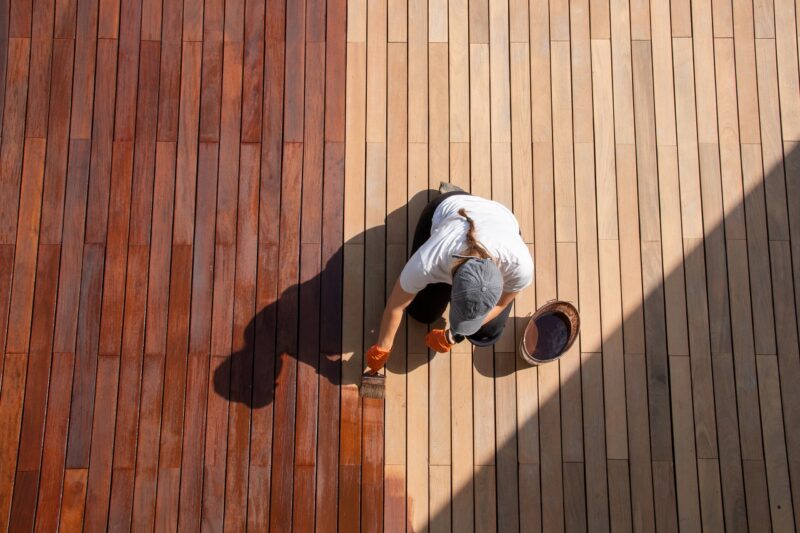Published: 09/10/24 By: Mike Bekin
Whether you have just screwed down your last timber board or are looking to refresh your years-old decking, adding a finish to your timber is a smart idea. It revamps, protects and can be tailored to suit your style – what’s not to love?
There is only one question remaining: should you paint, stain or oil your timber decking?
To help you figure this out, we have put together a quick guide taking you through all the key factors which can influence your decision.
New Timber Decking
If you have new decking made from a timber species which is well-suited to outdoor use (such as Balau, Cumaru or Ipe), you wont need to apply a finish to the timber. Instead you can let your boards weather naturally for a rustic-chic finish which blends perfectly with your outdoor setting. New decking also ensures that any pre-applied treatments or finishes have been removed from the surface of your timber, giving you a fresh canvas to work with which will better adhere to your paint, stain or oil.
Choosing Between Paints, Stains and Oils
Each treatment is a little different, bringing a new look and benefit to your timber decking. Let’s take a peek at a quick overview to get a better idea of the right finish for your project:
- Paint – Paints come in an almost endless array of colour choices, letting you pick and choose depending on your aesthetic, and will provide an even, ‘full-coverage’ finish. We recommend choosing a specialist timber paint which will help protect the wood beneath by filling in gaps and providing a waterproof coating.
- Stain – Stains provide a more natural finish than paints while still altering the colour of your timber. These are translucent colourings which allow the underlying grain of the wood to shine through, while also providing waterproofing and protective benefits.
- Oil: Oils provide the most natural-looking finish out of the three, leaving only a very subtle colour behind when used correctly. The main purpose of timber decking oil is to soak into the timber and replace any natural oils lost to weathering, maintaining the health of your timber for a shinier, brighter finish.
Just to go through that again, paints are opaque, stains are subtle, and oils bring health to your timber.
The Condition Of Your Decking
Aside from aesthetics, the condition of your timber will play a part in the right finish for your decking.
Oils, for example, are best suited to timber which is still in good shape. This is because it wont drastically affect the look of your decking or fix any problems, but will instead prevent future issues.
Decking which has seen better days may require the ‘cover all’ solution of paint. This is ideal for covering any cracks, flaws and faded timber, breathing new life into old boards. It can also be touched up relatively easily over the years, providing a low-maintenance option for a deck that always looks its best.
Stains are a good in-between here. They are fantastic for hiding any weathering and fading if that is not your desired look, but they are not going to hide any larger flaws.
Ask the Professionals
Not sure what finish your timber decking needs? No problem, we can help. Simply get in touch today and our timber decking experts will be happy to lend a hand.
In the meantime, get inspiration for your next DIY project with our range of sustainable timber products.
Tags: timber finish, timer decking
Categories: Insights
